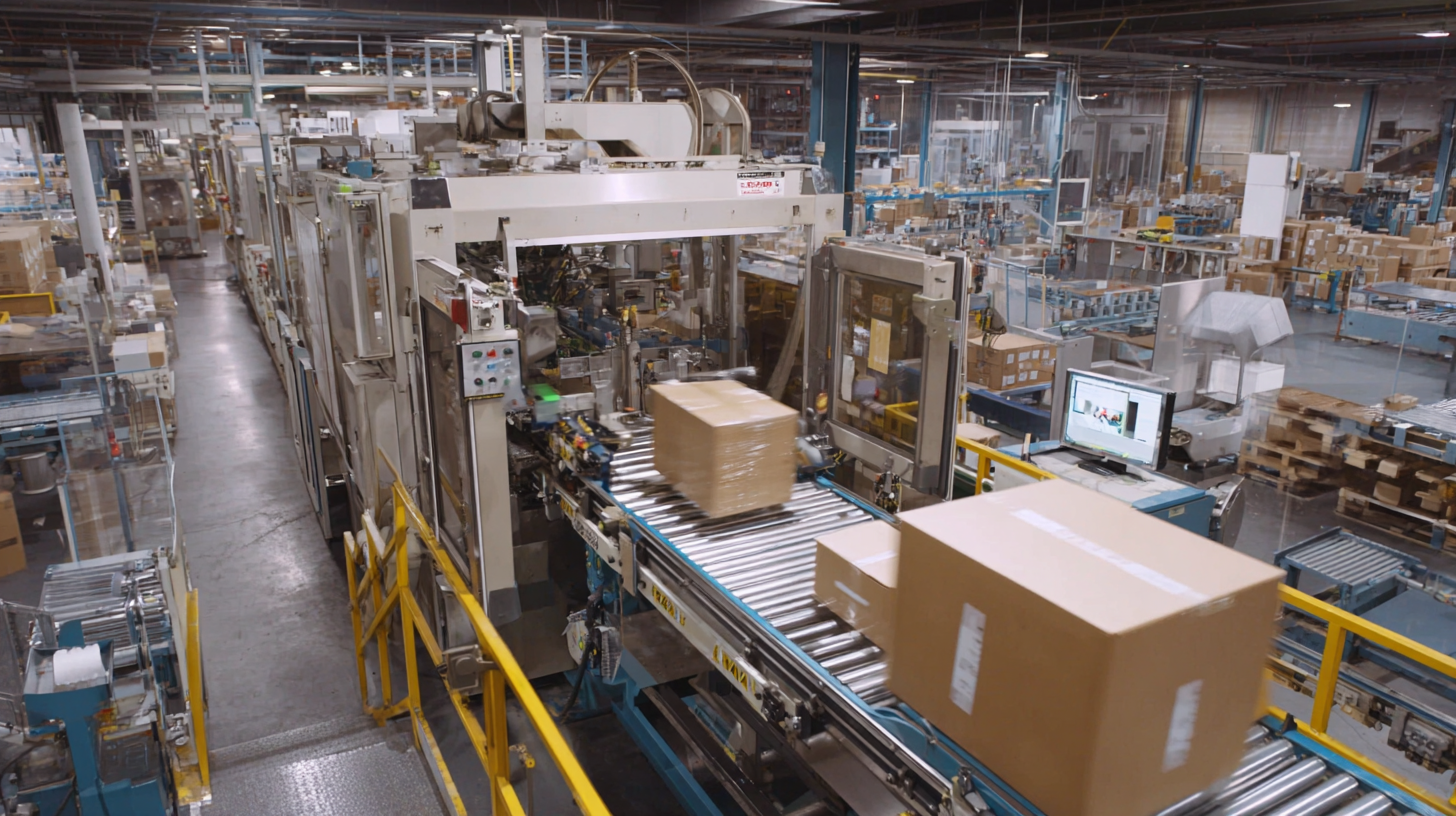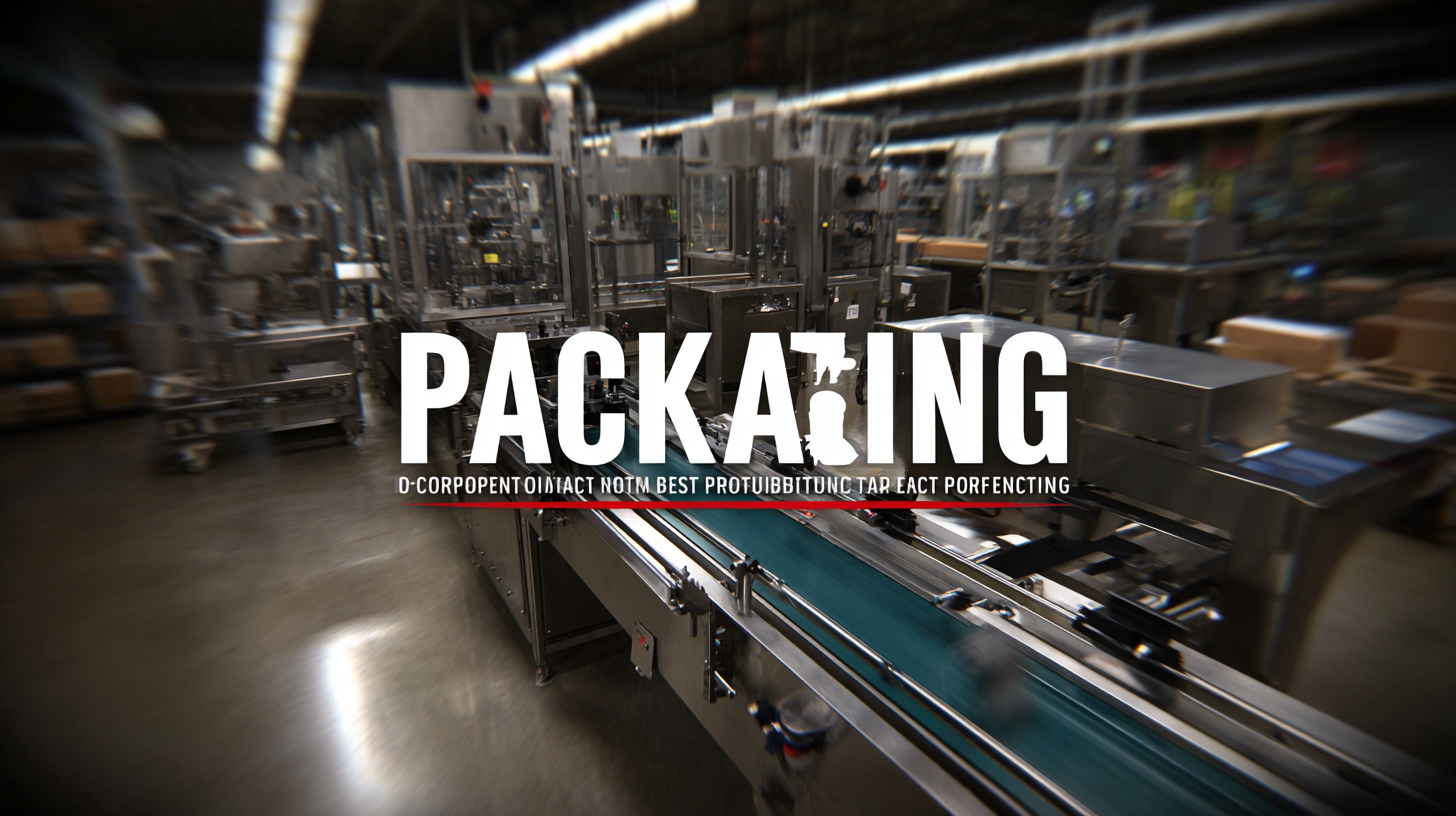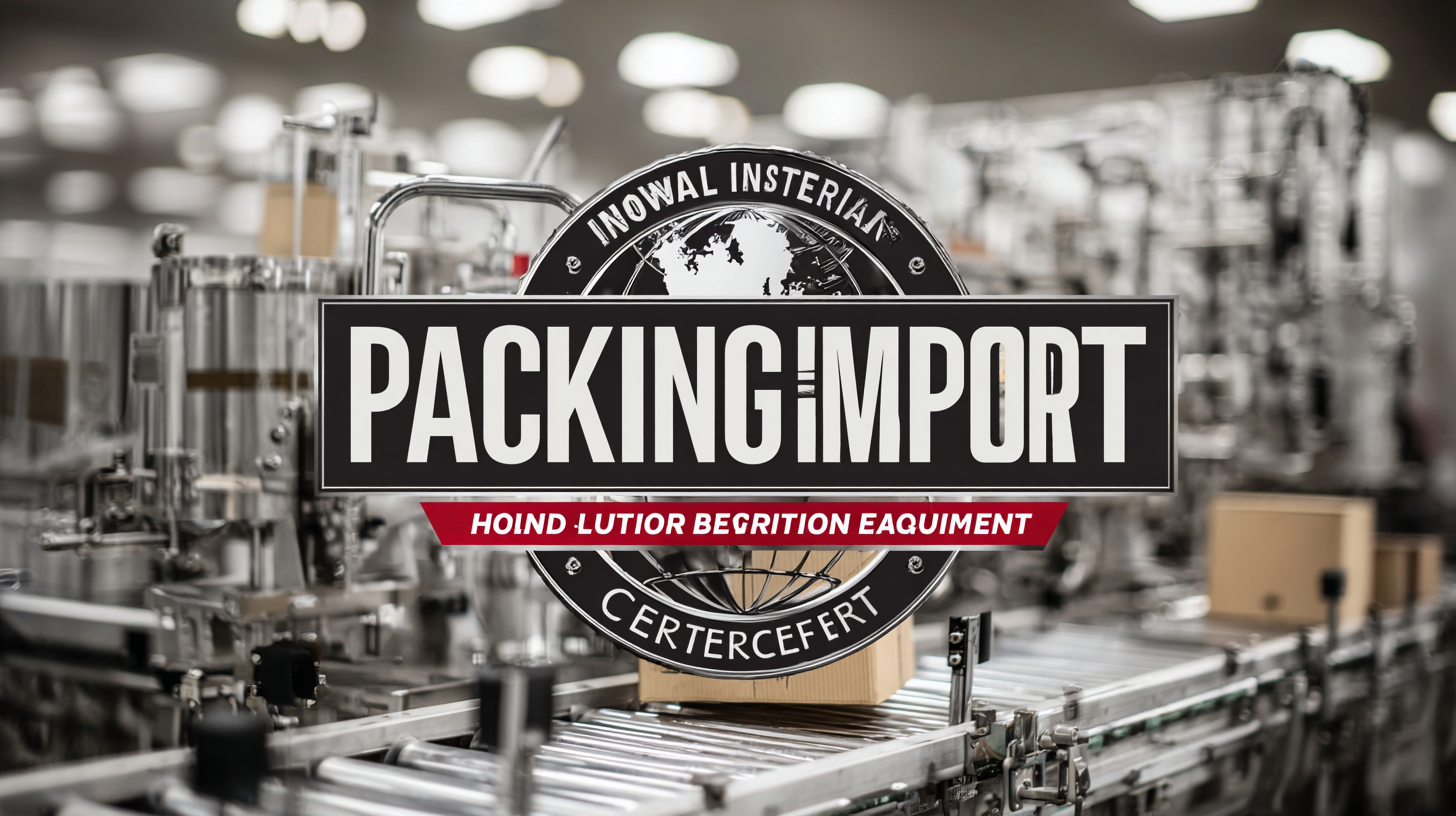How to Navigate Global Import-Export Certifications for Best Packaging Equipment
In the increasingly interconnected global marketplace, the importance of navigating import-export certifications for Packaging Equipment cannot be overstated. According to a report by Grand View Research, the global packaging machinery market is expected to reach USD 50 billion by 2025, growing at a CAGR of 5.7%. This growth underscores the critical need for manufacturers to ensure compliance with international standards and certifications to facilitate smooth trade flows. As consumers demand higher quality and innovative packaging solutions, producers face the challenge of not only meeting national regulations but also adhering to the diverse requirements of foreign markets. With challenges such as varying certification protocols and sustainability considerations, understanding these regulations becomes essential for leveraging China’s manufacturing prowess on the global stage. This article will provide insights on how to navigate the complex landscape of global import-export certifications, ensuring that Packaging Equipment meets international standards and positions manufacturers for success in a competitive environment.

Understanding the Importance of Global Import-Export Certifications in Packaging Equipment
Navigating the complexities of global import-export certifications is crucial for businesses dealing with packaging equipment. As the packaging industry expands, the importance of abiding by international standards and certifications cannot be overstated. According to a report by the International Packaging Association, approximately 70% of companies that fail to secure appropriate certifications face significant delays and increased costs. This underscores the necessity of understanding regional regulations and certification processes to ensure smooth cross-border transactions.
Furthermore, compliance with global import-export certifications not only streamlines the shipping process but also enhances product credibility. A study by the Global Trade Compliance Institute indicated that companies with verified certifications experience a 50% reduction in customs clearance times. These certifications reassure clients and partners of the quality and safety of packaging equipment, thereby promoting higher levels of trust and market penetration. In an era where packaging plays a pivotal role in supply chain success, staying informed about certification requirements is key to sustainable growth and competitive advantage.
How to Navigate Global Import-Export Certifications for Best Packaging Equipment
| Certification Type | Issuing Authority | Region of Applicability | Validity Period | Purpose |
|---|---|---|---|---|
| ISO 9001 | International Organization for Standardization | Global | 3 years | Quality Management |
| CE Marking | European Commission | European Economic Area | Not specified | Safety and Health Compliance |
| FDA Approval | Food and Drug Administration | United States | Varies by product | Public Health Protection |
| REACH | European Chemicals Agency | European Union | Ongoing | Chemical Safety |
| UL Certification | Underwriters Laboratories | Global | 1 year | Product Safety |
Key Regulatory Bodies Involved in Import-Export Certifications for Packaging Systems
Navigating the complex landscape of global import-export certifications is essential for companies dealing in packaging equipment. Various regulatory bodies govern these certifications, ensuring compliance with local and international standards. For instance, the China Compulsory Certificate (CCC) is mandatory for numerous products entering the Chinese market, emphasizing the necessity of understanding specific regional regulations before exporting. Moreover, regulations for exporting goods to Mexico, particularly radio-telecom devices, are frequently changing, presenting challenges that require up-to-date knowledge of compliance processes.
tip: Always stay informed about the latest updates and timelines for certification processes in your target countries. This can help streamline your export strategy and avoid delays.
In addition to industry-specific certifications, sustainability regulations are becoming increasingly critical. The European Union's upcoming directives on sustainability reporting signify a trend towards stricter environmental accountability. Companies must not only comply with existing packaging regulations but also prepare for future environmental legislative changes to remain competitive in global markets.
tip: Consider establishing relationships with local regulatory experts or compliance consultants in your target export markets. This can provide valuable insights and help businesses navigate the intricacies of import-export certifications effectively.
Global Import-Export Certifications for Packaging Equipment
Navigating Compliance: Best Practices for Securing Packaging Equipment Certifications
Navigating compliance in the packaging equipment sector is essential for businesses aiming to excel in international trade. Securing the right certifications not only ensures adherence to regulations but also enhances the credibility of your packaging solutions. Companies must be diligent in understanding the specific requirements of their target markets, as regulations can vary significantly. This is especially true when dealing with pharmaceutical packaging, where compliance with guidelines set by different regulatory bodies is critical.
**Tips:** Always stay informed about the latest compliance updates specific to your industry. Engage with professional organizations that provide resources on certification processes. Additionally, establishing strong relationships with certified packaging suppliers can help streamline the procurement of compliant materials.
Moreover, implementing best practices for safety, such as using certified packaging for dangerous goods, can greatly mitigate the risks associated with shipping. Properly certified packaging not only prevents leaks and spills but also safeguards against accidents during transportation, ensuring the integrity of the products being shipped. By prioritizing compliance and safety, businesses can navigate the complexities of global import-export certifications effectively.
**Tips:** Regularly review shipping guidelines and verify that your packaging solutions meet international standards. Investing in training for your staff on compliance issues can also pave the way for smoother shipping processes and reduce the likelihood of regulatory setbacks.

Impact of Certification on Global Trade: Statistics and Trends in Packaging Equipment Market
In the rapidly evolving landscape of global trade, the significance of certifications for packaging equipment cannot be overstated. As businesses strive to expand their reach internationally, understanding and navigating the complex web of import-export certifications becomes essential. Recent studies indicate that the impact of these certifications on the packaging equipment market is profound, shaping trends and influencing purchasing decisions on a global scale. Certifications not only ensure compliance with regulatory standards but also enhance consumer confidence, ultimately driving sales.
This demand for certified packaging solutions aligns with the increasing globalization of B2B operations. The market for B2B telecommunication is expected to grow significantly, valued at USD 189.90 billion by 2033, demonstrating a remarkable CAGR of 15.8%. As companies seek robust telecommunication solutions to facilitate international trade, the intersection of certification and technological advancement in packaging is becoming increasingly clear. Businesses that strategically align their operations with certification requirements and the emerging trends in the telecommunication market will not only enhance their competitive edge but also streamline their global supply chains.
Future Outlook: Evolving Standards and Innovations in Packaging Equipment Certifications
As global trade continues to evolve, the standards governing packaging equipment certifications are also undergoing significant transformations. According to a recent report by Smithers Pira, the global market for packaging is expected to reach a staggering $1 trillion by 2024, driven largely by innovations in technology and sustainability. This increasing demand places pressure on manufacturers to adopt new certification standards that not only enhance product safety but also meet environmental regulations. The continuous evolution in these standards highlights the necessity for companies to stay informed and adapt quickly.
Tip: Regularly review certification updates from major organizations, such as ASTM and ISO, to ensure compliance and competitive edge in the market. Engaging with industry forums can provide insights into upcoming changes and best practices.
Furthermore, innovations in packaging materials, such as biodegradable plastics and smart packaging technology, are prompting the need for dynamic certification processes. A study by McKinsey indicates that companies investing in sustainable packaging solutions can achieve cost savings of up to 30% while boosting their market appeal. As such, firms must prioritize certifications that reflect these innovations, as they are increasingly becoming a purchasing criterion for consumers.
Tip: Invest in training programs for your team focused on the latest advancements in packaging technologies and compliance requirements, which will empower them to navigate these complexities effectively.

